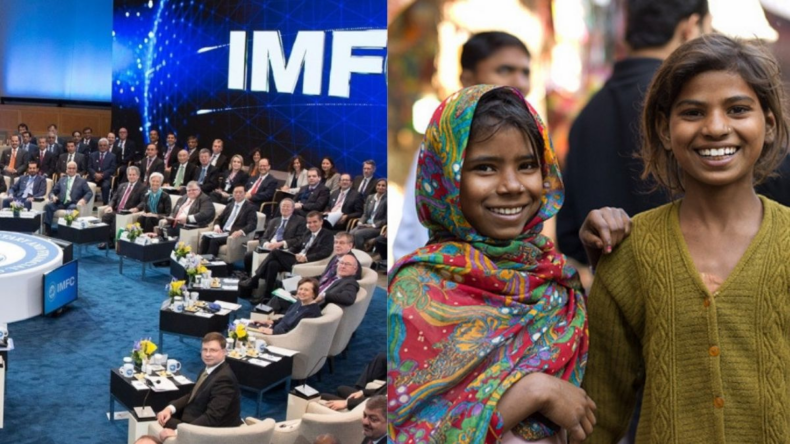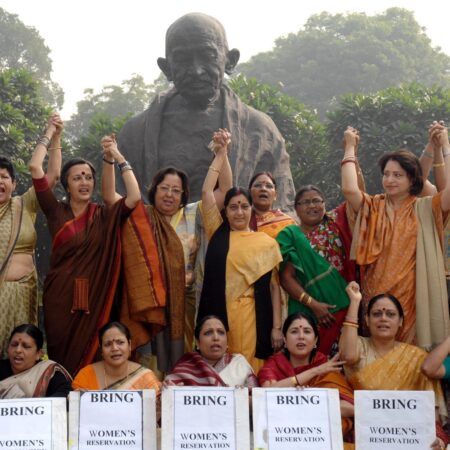The Pradhan Mantri Garib Kalyan Anna Yojana got recognized by the International Monetary Fund for keeping severe poverty levels in control throughout the epidemic.
According to an IMF document issued on April 5, 2022, the number of people living in severe poverty in India was 0.8 percent of the population in the pre-pandemic year 2019, as defined by the World Bank as living on US $1.9 or less in purchasing power parity (PPP) terms. The International Monetary Fund says that India has almost eliminated extreme poverty and cut consumption disparity to its lowest level in 40 years, thanks to state-provided food aid.
According to an IMF working paper prepared by economists Surjit Bhalla, Arvind Virmani, and Karan Bhasin, the number of people living in severe poverty stayed stable at less than 1% even throughout the epidemic due to “in-kind” subsidies, particularly food rationing.
The research comes amid when multiple recent worldwide publications have pointed to an increasing divide between the wealthy and poor in Asia’s third-largest economy, and studies on the economic shocks of the COVID-19 outbreak have yielded conflicting results.
Findings
According to the report, food rationing was “important” in ensuring that severe poverty would not develop and “remain at that low level” in the pandemic year 2020. A PPP is a statistic that compares the purchasing power of various currencies by equating their purchasing power.
“Our findings also show that the expanded social safety net offered by India’s food subsidy program absorbed a significant portion of the pandemic shock,” the scientists said. They determined that India had eradicated severe poverty based on back-to-back low poverty rates.
The impact of subsidy modifications on poverty, according to the authors, is what makes their research distinct. The findings are “amazing,” according to the draught paper. Food distributions help to alleviate poverty by serving as “cash transfers.”

According to the International Monetary Fund, working papers are research that gets done and is released to get feedback. The impact of in-kind food subsidies on poverty and inequality is included for the first time in these (new) estimations,” according to the research.
A December 2017 NBER working paper found that inequality fell during the epidemic, owing to falling service sector wages and higher agricultural productivity. During the epidemic, however, severe poverty increased.
According to new government figures, the agriculture sector grew 3.3% in 2020–21, but India’s GDP fell 6.6%. According to the World Inequality Report, India emerged as an unequal country in 2021, with the wealthiest 1% of the population controlling more than one-fifth of total national revenue.
According to research conducted in 2019 by International Food Policy Research Institute expert Yanyan Liu, the Mahatma Gandhi National Rural Employment Guarantee plan, as a conditional cash transfer, increased wellbeing and decreased inequality.
The calculation
For measuring inequality (adjusted for inflation), the Gini coefficient stands at 0.294. It is very close to the lowest level of 0.284 seen in 1993 and 1994 when the Gini coefficient was at 0.28. The Gini coefficient ranges from 0 to 1, 0 representing perfect equality and 1 representing extreme inequality. The number ranges between 0 and 1.
“The food allowance is 5 kg per person. That works out to around 25 kilograms per month for a family. If you convert it to dollars, you’ll get about $700. “This is not a trivial sum for impoverished families, “said Pronab Sen, India’s former top statistician.
However, I can’t see 750 altering the bit about inequality. Absolute poverty in terms of hunger is one thing, but inequality is another. “750 is just not enough to make a difference with the concern of disparity,” Sen said.
Lockdown magic
During the first COVID-19 shutdown in 2020, the Modi administration established the Pradhan Mantri Garib Kalyan Ann Yojana (PMGKAY), a scheme distributing a predetermined amount of free food grain (5 kg per head) to the needy in addition to their monthly subsidized grain allocation of 25 kg.

The program covers nearly 800 million people who get protected under the National Food Security Act. The PMGKAY will get extended until September 2022, according to the administration. People who were the richest in India made more money during the COVID-19 crisis, says the Oxfam Davos Report 2022.
Economists’ opinion
Given that severe poverty has got eradicated, Bhalla, one of the authors of the IMF research, stated, “India should shift from a $1.9 PPP poverty threshold to a $3.2 PPP poverty line.” It means that the poverty line should get raised, which is critical because it increases the income threshold for determining who is poor, allowing more people to get help from the government.
“Bhalla’s approach of utilizing National Accounts Statistics to evaluate poverty is not new, and also proclaimed poverty to be negligible in India 20 years ago,” said Himanshu, an economist at Jawaharlal Nehru University. “That is why we need another round of consumer spending surveys to determine actual trends in poverty and inequality in India,” Himanshu remarked.
Published By: Apoorva Wakodikar
Edited By: Subbuthai Padma













